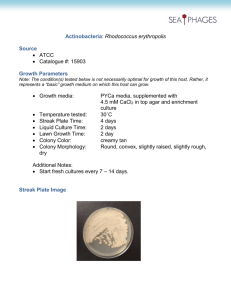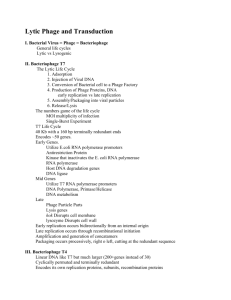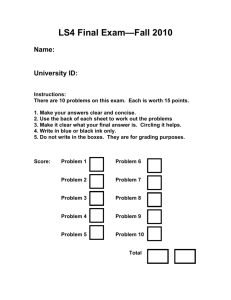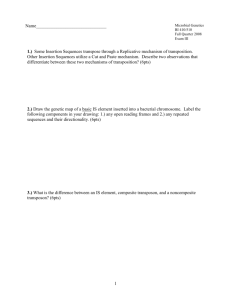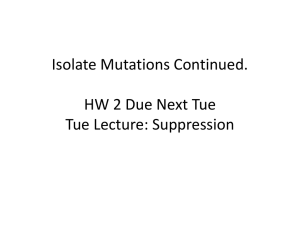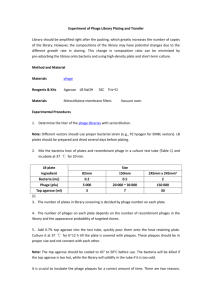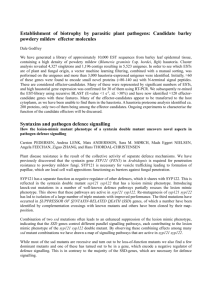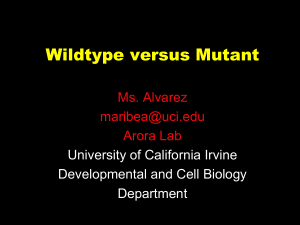Based upon proflavin-induced mutants in the rII locus of phage T4
advertisement
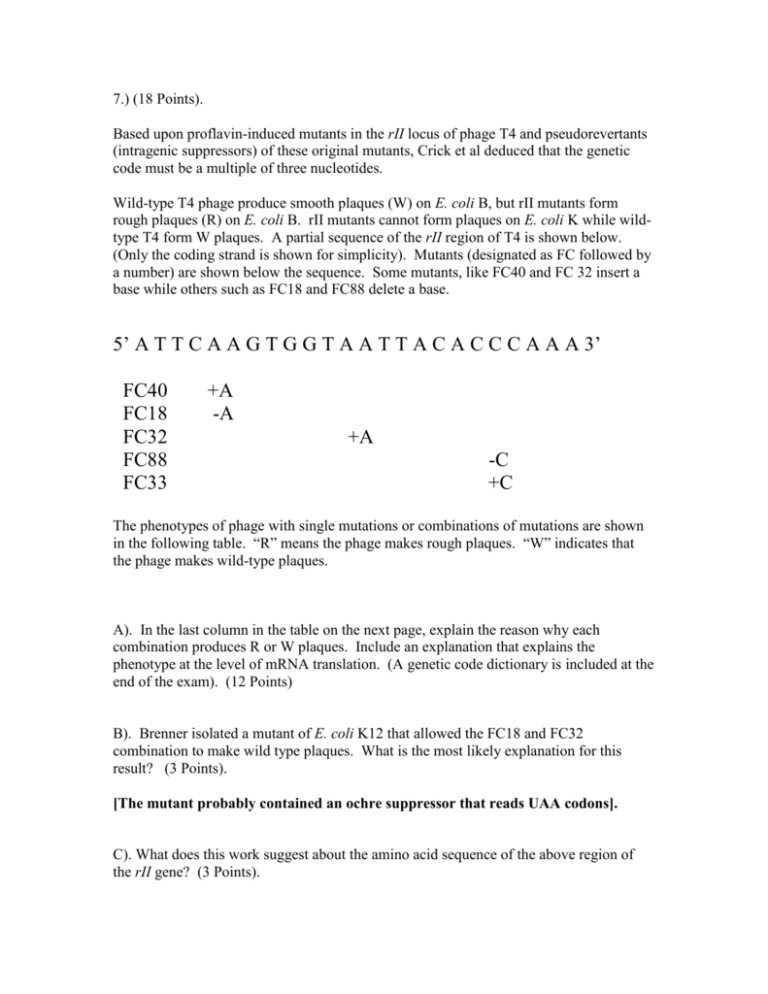
7.) (18 Points). Based upon proflavin-induced mutants in the rII locus of phage T4 and pseudorevertants (intragenic suppressors) of these original mutants, Crick et al deduced that the genetic code must be a multiple of three nucleotides. Wild-type T4 phage produce smooth plaques (W) on E. coli B, but rII mutants form rough plaques (R) on E. coli B. rII mutants cannot form plaques on E. coli K while wildtype T4 form W plaques. A partial sequence of the rII region of T4 is shown below. (Only the coding strand is shown for simplicity). Mutants (designated as FC followed by a number) are shown below the sequence. Some mutants, like FC40 and FC 32 insert a base while others such as FC18 and FC88 delete a base. 5’ A T T C A A G T G G T A A T T A C A C C C A A A 3’ FC40 FC18 FC32 FC88 FC33 +A -A +A -C +C The phenotypes of phage with single mutations or combinations of mutations are shown in the following table. “R” means the phage makes rough plaques. “W” indicates that the phage makes wild-type plaques. A). In the last column in the table on the next page, explain the reason why each combination produces R or W plaques. Include an explanation that explains the phenotype at the level of mRNA translation. (A genetic code dictionary is included at the end of the exam). (12 Points) B). Brenner isolated a mutant of E. coli K12 that allowed the FC18 and FC32 combination to make wild type plaques. What is the most likely explanation for this result? (3 Points). [The mutant probably contained an ochre suppressor that reads UAA codons]. C). What does this work suggest about the amino acid sequence of the above region of the rII gene? (3 Points). [The amino acids in this region of the protein are not important for function of the rII gene.] Mutation(s) FC40 Plaques on E. coli B R FC88 R FC18 R FC32 R FC40 + FC88 W Reason for Phenotype FC40 and FC88 are a (+) and (-) combination and the phenotype becomes wild-type indicating that the reading frame between the sites does not contain a nonsense codon. FC40 + FC32 R Both FC40 and FC32 are (+) additions. The prediction is that the translational reading frame is still wrong. FC18 + FC32 R FC18 and FC32 are (-) and (+) but the (-) creates an in frame TAA codon before the (+) addition. Thus there is translation termination and the mutant phenotype. FC40 + FC32 + FC33 W The three (+) additions restore the correct reading frame. If you draw out the sequence you will see that there are no termination codons in the new mRNA made by the triple mutant.
